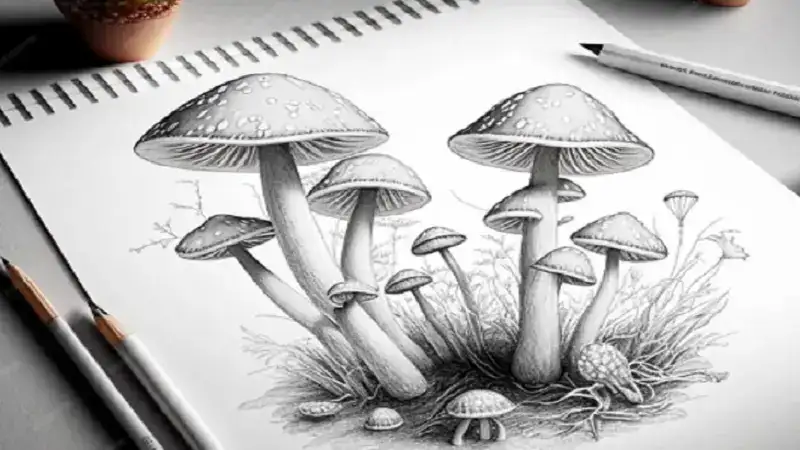Drawing:plcxcsjeqpq= mushroom opens a portal to a whimsical realm where nature’s intricacies meet artistic expression. These fungi, with their diverse shapes and textures, offer artists a playground of inspiration. Whether you’re a novice sketcher or an experienced illustrator, capturing the essence of mushrooms on paper can be both meditative and creatively fulfilling.
Understanding the Anatomy of Mushrooms
Mushrooms, belonging to the fungi kingdom, boast an array of forms—from the delicate chanterelles to the robust porcini. Each species presents unique challenges and delights for artists. Begin by observing their basic structures:
- Cap: The umbrella-like top of the mushroom, often featuring varied patterns and textures.
- Stem: The supportive base, ranging from slender to stout, offers stability and contrast.
- Gills or Pores: Found beneath the cap, these structures release spores and add intricate detail to your drawing.
Embracing Color and Texture
Mushrooms exhibit a spectrum of colors, from earthy browns and vibrant reds to subtle greys and whites. Experiment with different shading techniques to convey their texture—whether smooth, ribbed, or spiky. Use cross-hatching for a realistic portrayal of gills or stippling for a fuzzy surface texture on species like the lion’s mane.
Tools of the Trade
Before diving into your mushroom masterpiece, gather your artistic arsenal:
- Pencils: Ranging from 2H for light sketches to 6B for deep shading.
- Erasers: Precision erasers for highlights and kneaded erasers for softening tones.
- Paper: Choose textured paper for added depth or smooth surfaces for fine details.
Techniques for Bringing Mushrooms to Life
- Contour drawing:plcxcsjeqpq= mushroom: Start with a light outline to capture the overall shape and proportions of the mushroom.
- Layering Colors: Build depth by layering colors and blending gently to avoid muddying your palette.
- Highlight and Shadow: Enhance realism with well-placed highlights and shadows, paying attention to light sources.
drawing:plcxcsjeqpq= different mushroom Species
Explore the diversity of mushrooms through your art:
- Button Mushrooms: Simple yet elegant, focusing on smooth curves and subtle shading.
- Morels: Highlight their honeycomb texture and earthy hues.
- Fly Agarics: Embrace their iconic red caps with white spots, balancing bold colors with delicate details.
Inspiration from Nature
Take your sketchbook outdoors for firsthand inspiration:
- Field Sketching: Capture mushrooms in their natural habitat, noting environmental influences on their appearance.
- Photography: Use photos as references, focusing on macro shots for intricate details.
The Art of Observation
Drawing mushrooms goes beyond technical skill—it requires keen observation:
- Shapes in Nature: Notice how mushrooms interact with their surroundings, influencing their growth and appearance.
- Seasonal Variations: Explore how mushrooms change with the seasons, from spring’s delicate morels to autumn’s hearty chanterelles.
Cultivating Your Mushroom Artistry
Like any art form, drawing mushrooms evolves with practice and patience:
- Sketching Challenges: Participate in online challenges or local workshops to expand your skills.
- Feedback Loop: Seek constructive criticism to refine your techniques and expand your artistic vision.
Conclusion: A Canvas of Fungal Wonders
In the world of art, drawing:plcxcsjeqpq= mushroom offers endless possibilities for creativity and exploration. Whether you’re sketching for pleasure or pursuing a career in illustration, mushrooms provide a captivating subject rich in visual intrigue. Embrace their diversity, experiment with techniques, and let your imagination flourish on the canvas of fungal wonders.
This article celebrates the art of drawing:plcxcsjeqpq= mushroom, guiding readers through techniques and inspiration while maintaining an active voice to engage and inform

7 Replies to “The Art of “drawing:plcxcsjeqpq= mushroom”: A Creative Journey”
Comments are closed.